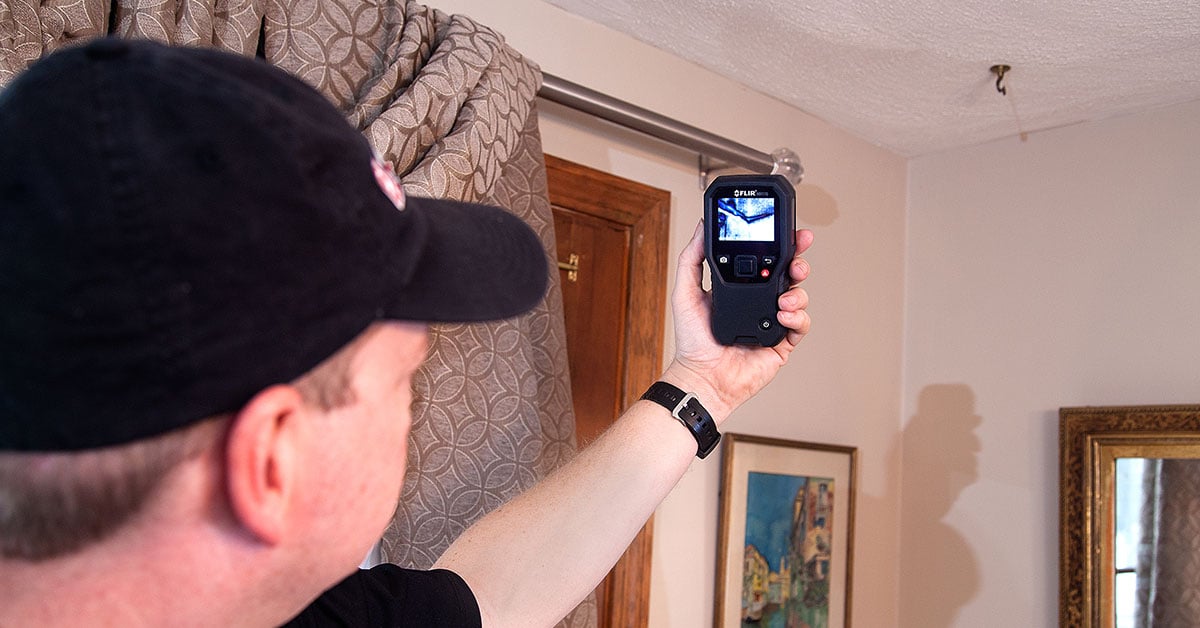Detecting Hidden Water Line Leaks: Six Practical Detection Tricks
Detecting Hidden Water Line Leaks: Six Practical Detection Tricks
Blog Article
They are making several great pointers relating to Locating water leaks overall in the content in the next paragraphs.

The minute you discover a leakage, calling your plumber for repair services is the very best remedy. Nevertheless, some tiny water leaks might not be visible. If you can not identify it with your nude eyes, below are some hacks that aid.
Early detection of dripping water lines can alleviate a potential calamity. Besides conserving you cash, it will decrease the irritation and frustration.
Check Water Consumption
Examine your water costs and track your water usage. As the one paying it, you should observe if there are any kind of inconsistencies. If you identify sudden changes, in spite of your usage being the same, it means that you have leaks in your plumbing system. Bear in mind, your water expense ought to fall under the very same variety each month. A sudden spike in your costs suggests a fast-moving leak.
A consistent boost every month, even with the same habits, reveals you have a slow-moving leakage that's likewise slowly rising. Call a plumber to extensively inspect your building, specifically if you really feel a warm location on your floor with piping beneath.
Check as well as Assess the Circumstance
House owners need to make it a routine to inspect under the sink counters and also also inside cupboards for any bad odor or mold and mildew development. These two warnings indicate a leakage so timely focus is needed. Doing regular examinations, even bi-annually, can conserve you from a major issue.
Examine the Water Meter
Inspecting it is a surefire method that assists you discover leakages. If it relocates, that suggests a fast-moving leak. This indicates you may have a slow-moving leak that can even be below ground.
Asses Outside Lines
Don't forget to check your exterior water lines also. Ought to water seep out of the link, you have a loosened rubber gasket. One small leak can throw away bunches of water and increase your water expense.
Do a Food Coloring Test
When it concerns water intake, 30% originates from toilets. Test to see if they are running effectively. Decrease specks of food shade in the storage tank as well as wait 10 minutes. If the shade in some way infiltrates your bowl throughout that time without flushing, there's a leakage between the storage tank and also bowl.
A lot more notably, if you understand your house is already old, keep a watchful eye on your heaters, hoses, pipes and so on. Check for discolorations and also damaging as the majority of pipelines and also home appliances have a life span. They will certainly also naturally wear away because of deterioration. If you presume dripping water lines in your plumbing system, don't await it to rise. Call an expert plumber as soon as possible so you do not end up with a horrible mess in your house.
The minute you locate a leakage, calling your plumber for repair services is the finest option. Some small water leaks might not be noticeable. Inspecting it is a guaranteed way that aids you uncover leaks. One tiny leakage can lose lots of water and increase your water expense.
If you suspect dripping water lines in your plumbing system, don't wait for it to rise.
How to Know If Your Home Has a Hidden Leak
Water Meter Reveals Inexplicable Water Usage
If you’d like to test whether or not there’s a leak somewhere in your home, you can do this using your water meter. Here is how to conduct the test:
Don’t use any water in your home for at least 30 minutes; this also means not turning on faucets or water-using appliances.
Go outside, and check your water meter for activity.
If your water meter shows that there was activity, even though no one was using any water, this proves that there is a leak in your home.Visible Mold or Mildew Growth
Leaks behind walls create moist, dark environments that allow mold and mildew to grow and thrive. Eventually, you might see mold growth forming on the wall closest to a hidden leak.
If mold is growing in an area that receives a high amount of moisture, such as a bathroom, it may simply be an indication that better ventilation is needed. However, if you see mold growth on a wall or the ceiling in an area where you would not expect, you probably have a hidden leak.
Musty, Mildew Odor
Sometimes you might not be able to see the mold or mildew that is growing as a result of a leak. However, the smell can give the problem away just as easily. If you catch a whiff of something musty, there’s a good chance that old water is collecting somewhere in your home that you can’t see.
Stained/Warped Walls, Ceilings, or Floors
When your home soaks up water, a variety of red flags can become visible, including ceiling stains, bubbling drywall, warped walls, and sagging floors. While these issues can be caused by excess humidity, they can also be signs that a pipe or plumbing connection has started leaking behind your walls.
Inexplicably High Water Bill
After a while, you get a general sense for what your water bill should be. If you own a pool or sprinkler system, your bill will tend to be higher during summer. However, if you receive a water bill that seems especially high, and you can’t figure out what caused it, then you may have a hidden leak somewhere that’s increasing your bill.
https://www.plumbingjoint.com/blog/2019/july/how-to-know-if-your-home-has-a-hidden-leak/

We were made aware of that editorial about Detecting hidden plumbing leaks from an acquaintance on another site. Sharing is good. Helping others is fun. We value reading our article about Finding hidden leaks.
Toilet issues? Call! Report this page